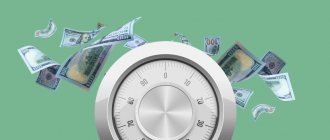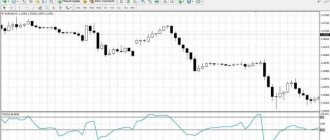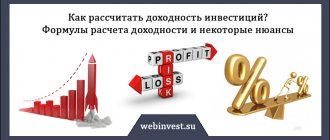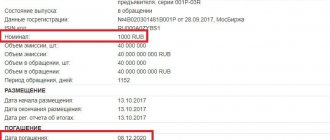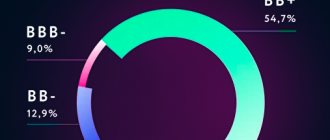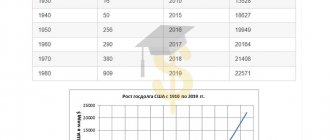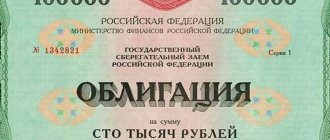We continue to unravel the bond tangle. After a detailed story about this instrument, including the history of its appearance and “coupon clipping,” it’s time to talk about default risks, interest rate risks, reinvestment and liquidity risks, as well as give a number of examples of their use.
This post is based on two of my lectures from the Finmath for Fintech course, recordings of which can be found here: “Bonds. Risks and Credit Spread" and "Use of Bonds".
What are corporate bonds
Corporate bonds are a type of securities issued by various business enterprises.
The issuer can be a factory, bank, trade and service company, retail chain or other organization. KOs combine increased financial risk and increased profitability for the investor.
By issuing bonds for individuals, commercial enterprises raise money to replenish working capital, development, expansion of activities, and modernization.
This is more profitable than taking out a bank loan at 15-20% per annum. If an organization is experiencing financial difficulties, then lending is completely unavailable. At the same time, the company's fame and positive image ensure stable demand for bonds on the stock exchange.
Lose to inflation
We all invest in debt securities with the main goal of earning profit. Payments are fixed and profits are guaranteed. Sort of.
But….
For some reason, many people do not take inflation into account.
We brought you papers at 8% per annum. And during this period, inflation in the country amounted to 10%.
And how would we make a profit and earn something? But in fact, the real profitability was “-2%”.
Over short periods, one can roughly estimate the real yield on debt securities. But everything changes as the circulation period increases. There are 10-year, 15-20 and even 30-year papers.
Yes, they have a higher coupon rate. Compared to short ones (3-5 years old). But this increased profitability could play a cruel joke in the future.
No one can say what inflation will be like in a year or two, much less in 10 years. Will decrease or increase.
And here we have uncertainty. We will earn something in the future. Or we will be at a loss.
What to do?
The rule is simple. The longer the circulation period, the higher the risks. Or the likelihood of losing to inflation. To be fair, we note that you can make money on long bonds if inflation decreases in the future.
Types of corporate bonds
KOs are distinguished by the presence of guarantees:
- Unsecured. In the event of security default (bankruptcy), payments on them are not made.
- Secured. The issuing company provides guarantees in the form of liquid property. If the financial reserve does not allow the investor to pay on time, the collateral is sold and the proceeds are used to pay off the bonds.
By application deadline:
- Long-term – from 5 years and longer.
- Medium-term – from 1 year to 5 years.
- Short-term – up to 1 year.
- Indefinite. The maturity of the bond is set after issue. In other words, it can be either 2 months or 20 years. Redemption is carried out at the request of the owner or enterprise that issued the security.
In this case, the term of the KO can be variable or permanent. These parameters are initially known and are specified in the release documents.
By method of income calculation:
- Discount or no coupon. Sold by the issuer on the stock exchange at a price below par. Interim interest payments are not provided. Income is generated from the difference between the purchase price and redemption price. For example, the issuer sells bonds for 900 rubles, and their face value (which is paid at maturity) is 1,000 rubles. The total profit is 100 rubles.
- Coupons. Traded at face value, more expensive or cheaper. Coupon is a percentage of the nominal value that the investor receives once a month, quarterly or semi-annually. Thus, the profit consists of the difference between the purchase and redemption prices plus the amount of the coupon interest.
Important! From January 1, 2021, coupon corporate bonds are not subject to personal income tax. The discount tax is calculated as before.
According to the form of ownership:
- To bearer. A bond can belong to any person; it can be sold, given, pledged, or inherited.
- Named. Upon purchase, it is registered to a specific person.
By repayment method:
- Standard. The nominal value is paid to the holder at the end of the circulation period.
- Depreciation. Partial return of the nominal value is carried out throughout the entire ownership period.
- Convertible. The bond can be exchanged for shares of the issuer or other securities. The terms of the exchange are always fixed in documents and are known before the purchase; it is carried out only at the request of the investor.
Before choosing corporate bonds for your investment portfolio, you should decide on your trading scheme. What is important here is the player’s experience in the market, his priorities and willingness to take risks.
For example, unsecured bonds are more profitable, the coupon interest guarantees an intermediate profit, and discount bonds are distinguished by a simple calculation of monetary profit.
Give liquidity
It is better to avoid securities with low trading volumes. A shortage of buyers and sellers inevitably leads to a widening of the trading spread.
The spread can be several percentage points.
When buying securities with low liquidity, you will initially pay slightly above its fair value. When selling, you will have to lower the price tag to interest buyers.
We bought a bond for 100% of its face value. After a while you need money and you decide to sell it. And no one wants to buy it for the price you paid. The maximum they offer you is 95%. What to do?
Or agree. Or wait for a good offer. True, it is not known how long this will take, maybe days. Maybe weeks.
The hardest thing is when there are no buyers at all (imagine this happens). Or there are arrogant speculators. And they offer to buy back the bonds at a ridiculous price. Percentage for 50-70%.
For example. A glass of offers to buy and sell for one of the illiquid bonds. The difference between the best offers (spread) is 2 rubles. Or a little less than 2 percent.
If you had more than 3 bonds in your hands, then in addition to this number you would have to sell them for 90 rubles and kopecks.
Then the spread would be 20%. This is simply a huge indicator.
Bonds with low liquidity
Issuer classification
The classification of issuers issuing securities allows for a basic assessment of their reliability.
In the classic format they are divided into three echelons:
- Highly liquid enterprises and federal networks. A stable financial position is confirmed not only by its image, but by many years of activity, profitability, liquidity and economic capacity. These include Sberbank, Gazprom, Rostelecom, MTS and other enterprises that are not subject to sudden bankruptcy. Corporate bonds from blue chip companies are virtually risk-free.
- Representatives of regional enterprises occupying leading positions in the local market.
- Commercial firms and low credit ratings, weak financial and production planning.
As a rule, these are small organizations that can set a high pace for the market, but its stability is questionable. For example, a retail chain sells popular goods of temporary demand - a cheap alternative appears and the company loses its position. Bankruptcy is also possible within a few months.
How to enable margin lending
In Tinkov - click on the “wheel” at the top right - Margin trading.
In Sberbank - Sberbank Online application - Other - Brokerage services - use borrowed funds ( works only in the DESKTOP version , not in the mobile application).
Alpha Direct - Personal account functions - risk level
I advise you to read Personally, I was impressed by these two illustrative examples. I advise you to read before connecting the margin: 16. One of them is the account of Elvis Marlamov 17. And another interesting story from Smart Lab
Risks of corporate bonds
Investments always involve some risk. In the case of corporate bonds, it can vary from 1% to 99%. However, the initial assessment is relatively simple and can be done even by a novice trader without experience.
Main types of investment risk
The main types of risk include:
- Bond default. When the company that issued the security goes bankrupt, it has no funds left for redemption (payment of par price, coupon interest). The only guarantee for the investor is liquid collateral; in its absence, the money will not be returned.
- Percentage change. The coupon percentage of corporate bonds can be anything - constant, variable, floating. Sometimes it is tied to some variable, for example, to a key rate. If it falls, corporate bond yields also fall. Here the risk is the loss of part of the profit; the nominal value is fully paid at maturity.
- Credit spread. If the financial position of the issuing company in the market worsens, its ability to fully compensate for credit risks also decreases. In other words, if the organization is unable to fulfill its loan obligations, the bonds are at risk of default, or at best a technical default*.
* Technical default is a delay in the payment of coupon interest or face value when repaying a bond.
If an investor does not want to hold a debt security until maturity and wants to sell it during the circulation period, additional risks arise:
- Inflation can reduce the market value of a bond.
- The company's liquidity also reduces the price of the bond at the time of its turnover.
Additional risks only affect the market value. This is the price of a treasury bond on the stock exchange during its circulation period. Quotes of corporate bonds on the MICEX are unstable and can fluctuate in both directions, although the par value and coupon do not change.
Offer
Newbies often fall into this trap. Selecting securities based on stated yield.
I found long bonds (10-year and above) with very good yields. I bought it and am happy. The size of the annual coupon has been fixed for many years. The paper will bring high profits every year.
Time will pass (several months or years). And then there’s the bond offer. The company forcibly redeemed the bonds and paid their owners the face value.
For an investor, this is a loss of future returns. After a while, you may not find similar returns on the market. And you will have to buy new papers with a smaller coupon. But it's not that scary.
The problem with the offer is that the securities could be purchased at a price higher than their face value. For example, 110% of the face value or 1100 rubles per bond. And at the time of the offer, the issuer returns 1000 rubles. Immediately a loss of minus 10%.
And real profit in the form of high coupons received during this period decreases.
Selection and evaluation of corporate bonds
The right choice of corporate bonds always depends on the needs of the investor. The chosen scheme for increasing profits also has a great influence. For example, consider several bond issues.
No. 1. O1 Group Finance-001R-03. From the general summary provided by the authoritative website www.rusbonds.ru, it is clear that there was a default on the issue.
When you expand the card, detailed facts are displayed.
During 2018 – 2021, the issuer regularly did not pay coupon interest. At the same time, coupon charges are low relative to the risk.
Plus, they are tied to the key rate and the potential coupon yield does not exceed 11.75%.
Conclusion: investing money in this issue is a questionable decision. However, it is not always possible to limit yourself to only this information. For accuracy, it is necessary to make inquiries about the financial condition of the issuer; it is possible that difficulties with payment are temporary.
The issue Home Money-001Р-01 has a similar situation. Since mid-2018, there has been a regular default on payments, including coupons. The reason for the insolvency of the MFO was high credit risk.
To conduct its activities, the organization took out many loans, but at one point the lender demanded a full refund of the funds. In order to continue providing services to the population, the Home Money MFO began to attract funds from investors.
To this day, the online microcredit service operates. Considering the income generated by overpayments by borrowers, the company has a chance to pay off its debt obligations.
However, at the moment its position is unstable, therefore, the market price of bonds is decreasing, and the final yield is increasing. Increased return = increased risk - this is the law of corporate bonds.
Another example is a reliable issuer with low yield. No. 3. Sberbank-001-06R. The issue card shows that the bond is trading below par, but the market price is rising.
The payback period (duration, days) is 1262 days, and the coupon income is only 7.2% per annum.
Conclusion: the issue of corporate bonds was carried out by a first-tier company. The profitability is low and is only 1-1.5% higher than the financial benefit from ordinary bank deposits. At the same time, Sberbank is one of the most reliable organizations in the Russian Federation. The probability of bankruptcy and default of securities tends to zero and is possible only in theory.
Taxes
Bond coupons are profit. And the state has its own plans for it. We need to share. Give 13% of profits in taxes.
You have 100 rubles of profit or 10% per annum in the form of coupon income. Please be so kind as to give 13 rubles (in fact, no one asks. Coupons are deposited into the account already cleared of taxes).
In reality, net profit decreases to 8.7% per annum.
What are the risks?
There is no tax on coupon yield on state, municipal and some corporate bonds.
We get that with the same declared coupon rate for different bonds, we can get different yields.
Recommend: Be careful! Old bonds.
Pros and cons of CO
This type of debt securities is popular among experienced investors and novice traders.
The reason for this is the significant advantages:
- Different types of KOs, the choice is up to the investor.
- The issue is carried out by companies in different industries. By controlling the market, you can regularly invest money in enterprises whose activity and profitability are at their peak.
- Wide risk range. The stock exchange offers to take both reliable corporate bonds, for example, from Sberbank or AHML, and high-risk ones with increased profitability.
- KOs are traded during the circulation period; it is not necessary to hold them until maturity; they can be sold and bought at any time.
- Attractive profitability. Bonds issued by commercial organizations are almost always more profitable than GKOs, OFZs, and municipal central banks.
- Taxation of corporate bonds is a set of several articles of the Tax Code of the Russian Federation. They are easy to understand even without accounting knowledge. With the right approach and opening an IIS, you can be exempt from a number of taxes.
The investment instrument also has disadvantages:
- The safest securities are those with low volatility (profitability). This is the main disadvantage of CO: the financial benefit is directly proportional to the risk. Reliability reduces speculative interest - such bonds are practically not traded because the market price rarely changes.
- A large number of bonds with different parameters and issuers complicates selection and analysis.
- Speculation on the stock exchange during the period of circulation of a security requires the investor to have at least basic knowledge of valuation and analytics. Playing blindly can quickly lead to unprofitability.
Forced closing of a position (MARGIN CALL)
The main thing for a broker is to save his funds and take all commissions from you.
In the event of a large drawdown, he may forcefully close all your positions (sell) in order to get his money back.
This is called MARGIN CALL. (People call it “Kolya Marzhin has come”)
What to do to avoid being closed? - Add money.
IIS
An important point regarding IIS : once a year, IIS can be replenished in the amount of up to 1 million rubles. And if you have already topped up 1,000,000 rubles during this period, then you won’t be able to top up any more!
This is the account of one well-known trader on IIS. 3 years of growth and capital went to zero.
The best information web platforms for analytics
You can find bonds and get acquainted with their main parameters on specialized web sites.
Here is a small list of reputable resources:
- rusbonds.ru. To use the site you need to go through a simple registration. The portal is easy to use and informative.
- cbonds.ru. Provides up-to-date information on all types of bonds with yield and quotes. There are detailed instructions for using the site.
- moex.com. Official website of the Moscow Exchange. It presents not only the corporate bond index, but all securities and their quotes, currency and precious metals rates.
Registration is required to use any site. However, this procedure is very simple and does not require the provision of personal data. The only thing you need is a mobile phone and e-mail.
Leverage
Leverage is the amount of money you can get in relation to your capital (cash or shares).
Let's take an example:
You think that Gazprom shares will rise and want to buy them.
You have 100,000 rubles.
The broker lends you another 400,000 rubles .
*(All calculations without lots and personal income tax - for simplicity)
Promotion price - 250 rubles
Bought: (100,000 + 400,000) / 250 rubles = 2000 shares
Next, the price increased from 250 rubles to 300 rubles , and you sold them.
You earned - (300-250)*2000= 100,000 rubles
WITHOUT LEVERAGE the results would be as follows:
(300-250)*(100 000/250)= 20,000 rubles
That is, the difference in profit0 = 80,000 rubles) is exactly the size of the leverage - 4 * 20,000 = 80,000 rubles
Conclusion: you earned 100% 20% (without leverage) . BUT, OBVIOUSLY, if the market moved in the other direction by the same 20%, there would be nothing left of your capital , since the losses would be 100%.
*For simplicity, the calculations do not take into account the lending rate. (We assume that the purchase was short-term.)
When the market moves in the other direction
We considered taking cash from the broker in hopes that the stock would rise ( buying LONG ). But you can also bet on SHORT ( a bet on a fall in the stock price ).
My opinion: you shouldn’t short (unless it’s a hedge), and especially not with leverage . Since in a long position you at least have unlimited growth potential (x2, x3, x4, x5, etc. can grow), in a short position the fall is LIMITED .
Main conclusions
- You have to pay for leverage (depending on the broker, from 12-20% per annum; if you hold it for a long time, you can add a couple more hidden percentages).
- CPUR allows you to take more money, but this burns your deposit faster when the market moves in the other direction.
- Losing your deposit by 10-20-30% can delay the achievement of your goals by several years.
- A person experiences almost physical pain when experiencing losses and has difficulty thinking clearly.
- It is IMPOSSIBLE to predict where the market will go . There are too many factors that influence this. If you think you know where the market is going, you think you do!
- You can add 1,000,000 rubles to your IIS once a year and that’s it!
I'm not saying that shoulders are bad - they are just a tool, but for those who know how to use them. Getting the right amount at the right time is great! If you can provide security, say, within a month! You lose 1-2% of the commission, but you didn’t miss the moment.
Afterword
Nowadays a huge number of new traders have entered the stock market. The game is addictive.
How the account is drained most often:
- I played with a small amount. It was possible to multiply in a growing market.
- I found some, AS IT SEEM TO A PERSON, patterns.
- I started turning on the margin.
- Switched to futures.
- He climbed somewhere onto the whole “cutlet”.
- Lost my deposit.
I like 2 sayings within the community.
On the trader’s grave it is written: “This has never happened.”
"The second bottom as a gift."
As long as a person thinks that money can be earned in the stock market by drawing a line below or above, it is better not to engage in investments.
Why is this really dangerous?
Everything is beautiful only in the “rearview mirror”. This is how brokers usually lure you in - see what kind of profitability you could get by entering a trade here and exiting at this interval.
Here's a chart - you're already in the stock. I deliberately erased the ticker so that you would not know the company. Exit at this point? Will there be a rebound upward? The news background is different.
This is what happened after that. The stock fell again, down 30% . Of course, brokers raised the risk level on it and your deposit would begin to melt before our eyes if you used margin lending .
Well, okay, but at this point it was necessary to buy more? On the rebound?
Yes, the stock fell again. From the maximum it is already 50% , and if you were to get credit funds from the bottom peak - then 31% .
And, of course, they fell after that too. From the bottom peak it fell again by 30% , a total drop of 63% .
Of course it's Magnet. But there are many such stories on the MICEX, including VTB, Megafon, Lenta, Aeroflot, Apteka 36 and 6 and others. It seems that you even use many of them. Here everywhere there was a second, and even a third bottom “as a gift.”
A company from the American market CHESAPEAKE ENERGY CORP - how much could you catch here? Dealing with shale gas. Fell from $70 to 0.28! That is, the company has lost 99% of its value. But people are still trying to make money from it. It will bounce off!
This shows that it is especially dangerous to engage in such games in a pre-bankrupt state of the company! After all, even a drop from $0.50 to 0.25% is a drop of 50%!
CHK chart provided by TradingView
That is, no one can predict where the market will go. You just have to be prepared for any scenario.
Entertaining mathematics
There is another important point! Let's look at it with an example.
You invested 100 rubles in a Sberbank share. It fell by 50% and began to cost 50 rubles. You sold it.
Total: Your capital has decreased by 50%. It is 50 rubles.
Question: By what percentage should your capital grow before you return to your original amount?
Correct answer: 100%!
And the MICEX market is growing by 13% on average per year. With leverage, it is much easier to lose capital due to the same margin call.
I hope this helps you somehow.
Psychological moments
- It is very difficult to “cut” a loss. Now in the terminal -10%. Will we wait until -15% tomorrow? (It’s our own blood!) It’s difficult to decide to exit the deal on time, as a result the account is reset to zero.
- When stressed, cortisol is produced, and a person begins to think worse. It is extremely difficult to make the right and informed decision in such a state.
- People are ready to win small victories, but not big defeats. Therefore, profit is recorded as soon as the stock has grown by 1-2%. And they are ready to hold the loss up to -20%, in the hope that they were not mistaken in their decision.

